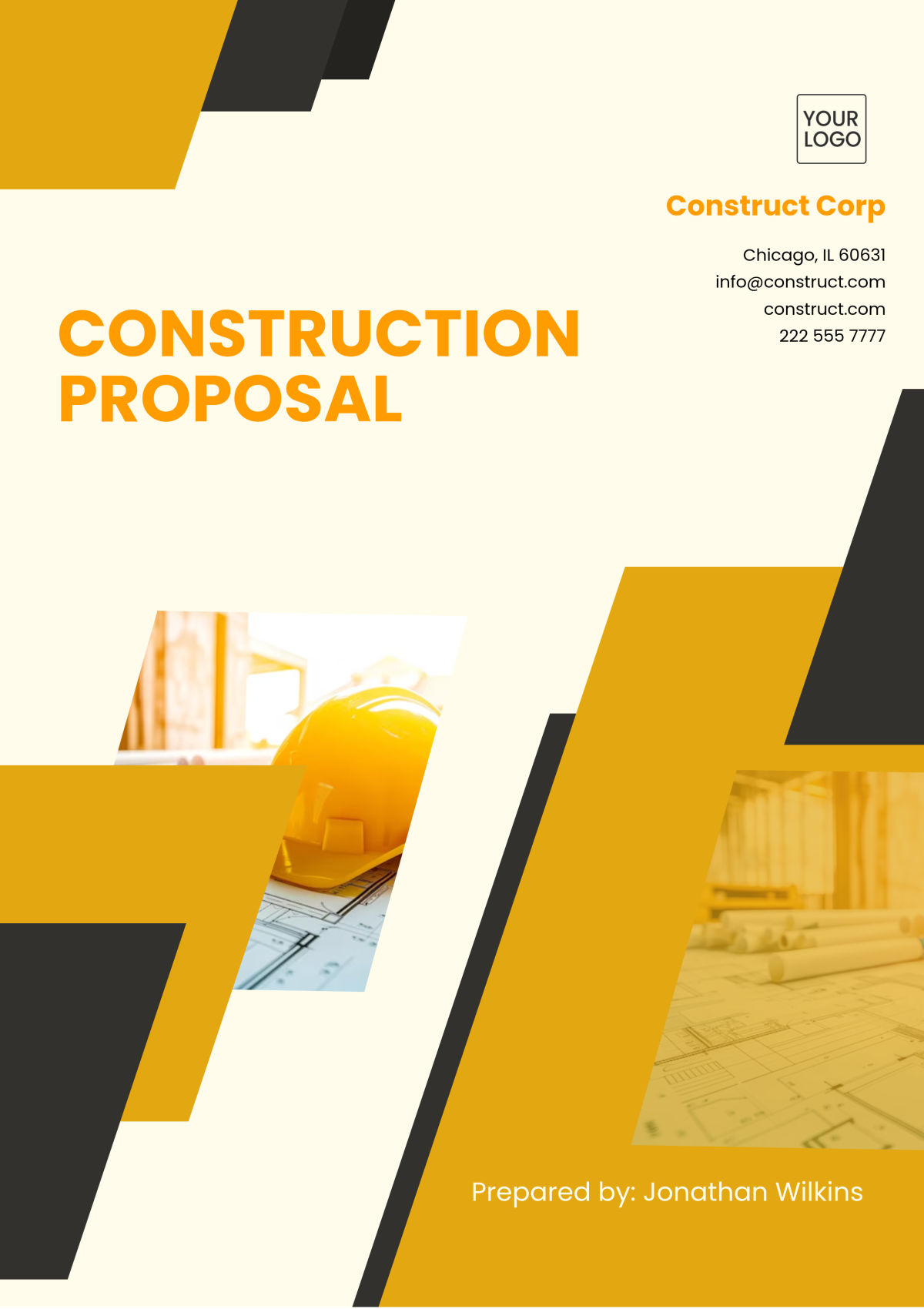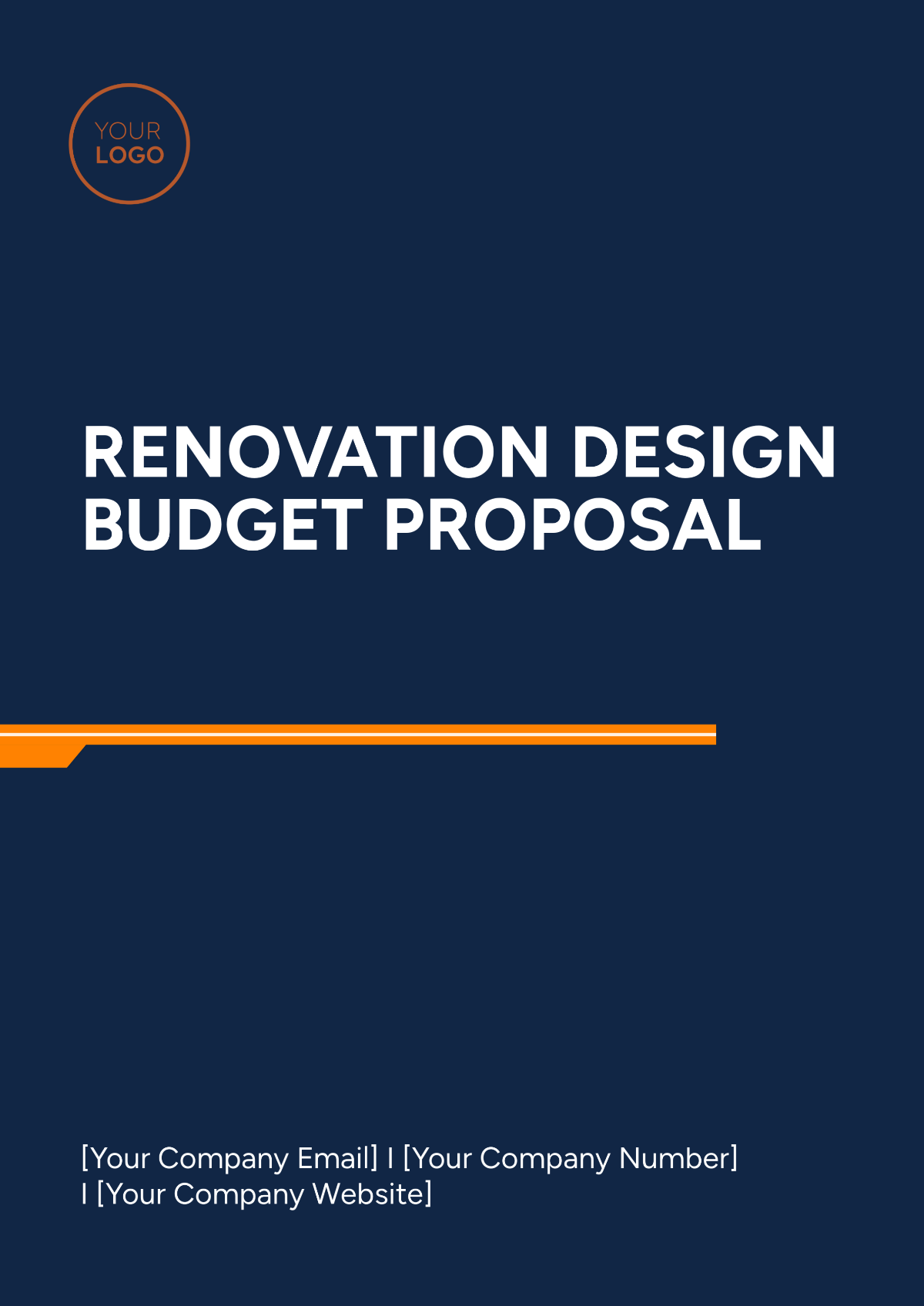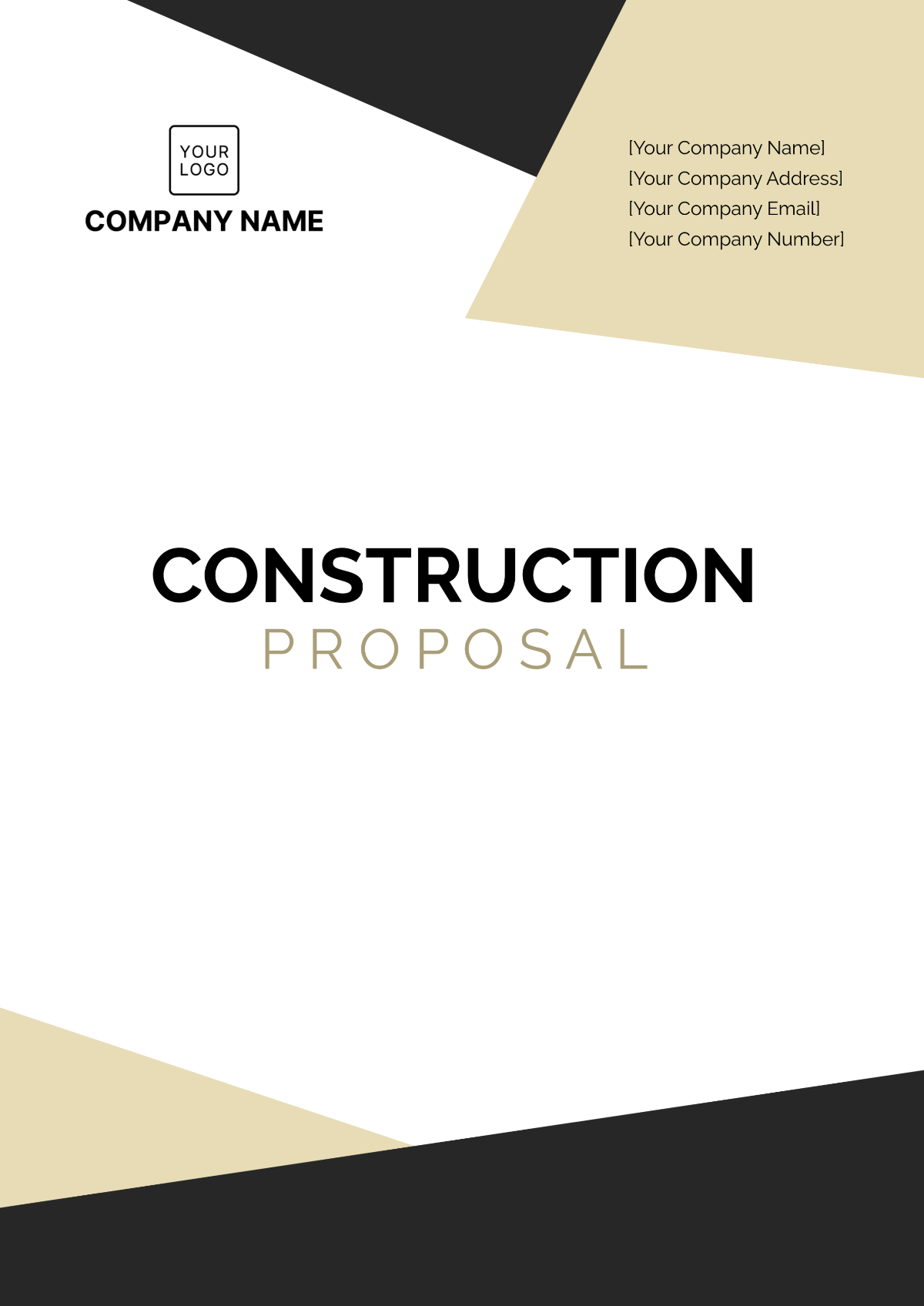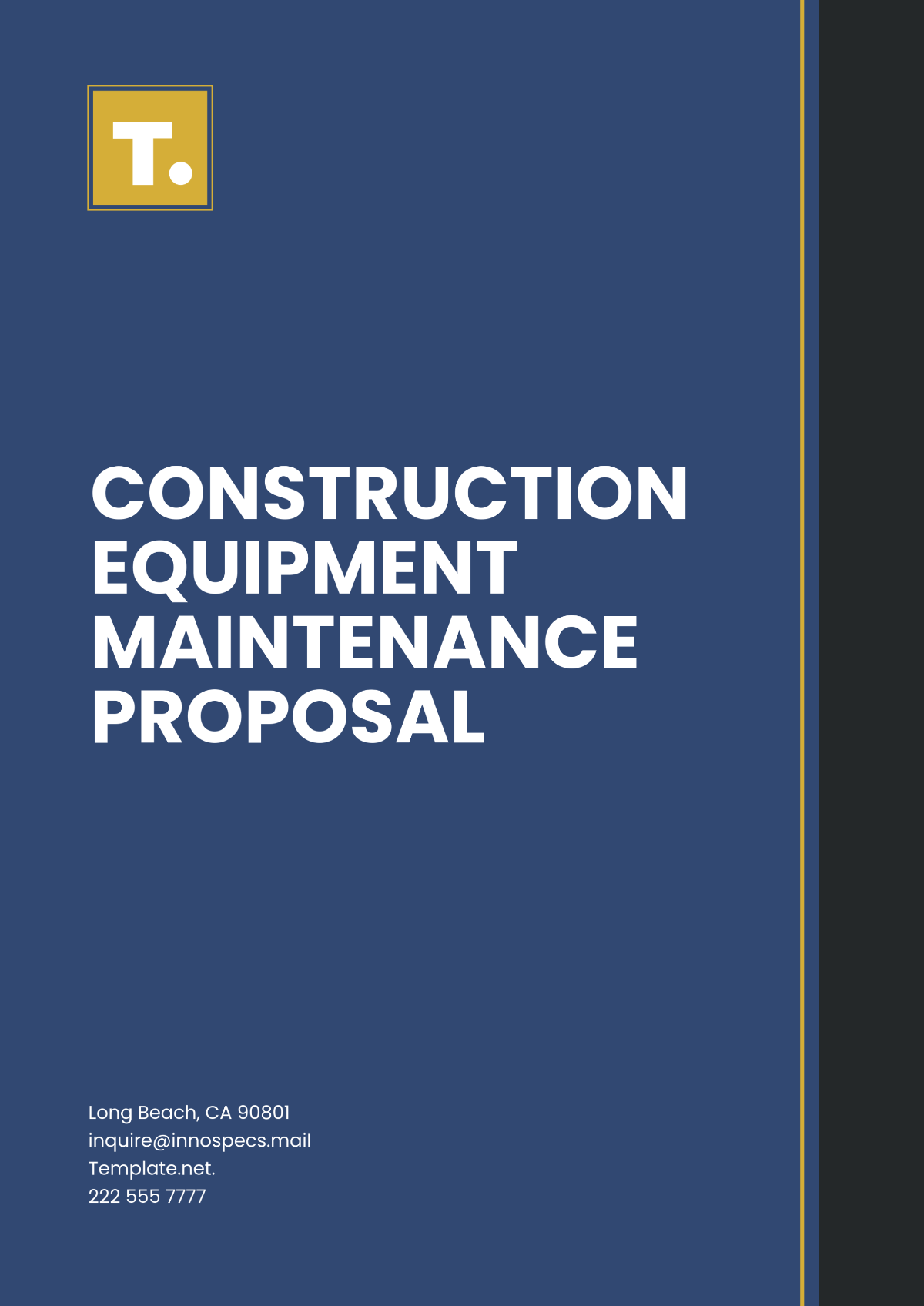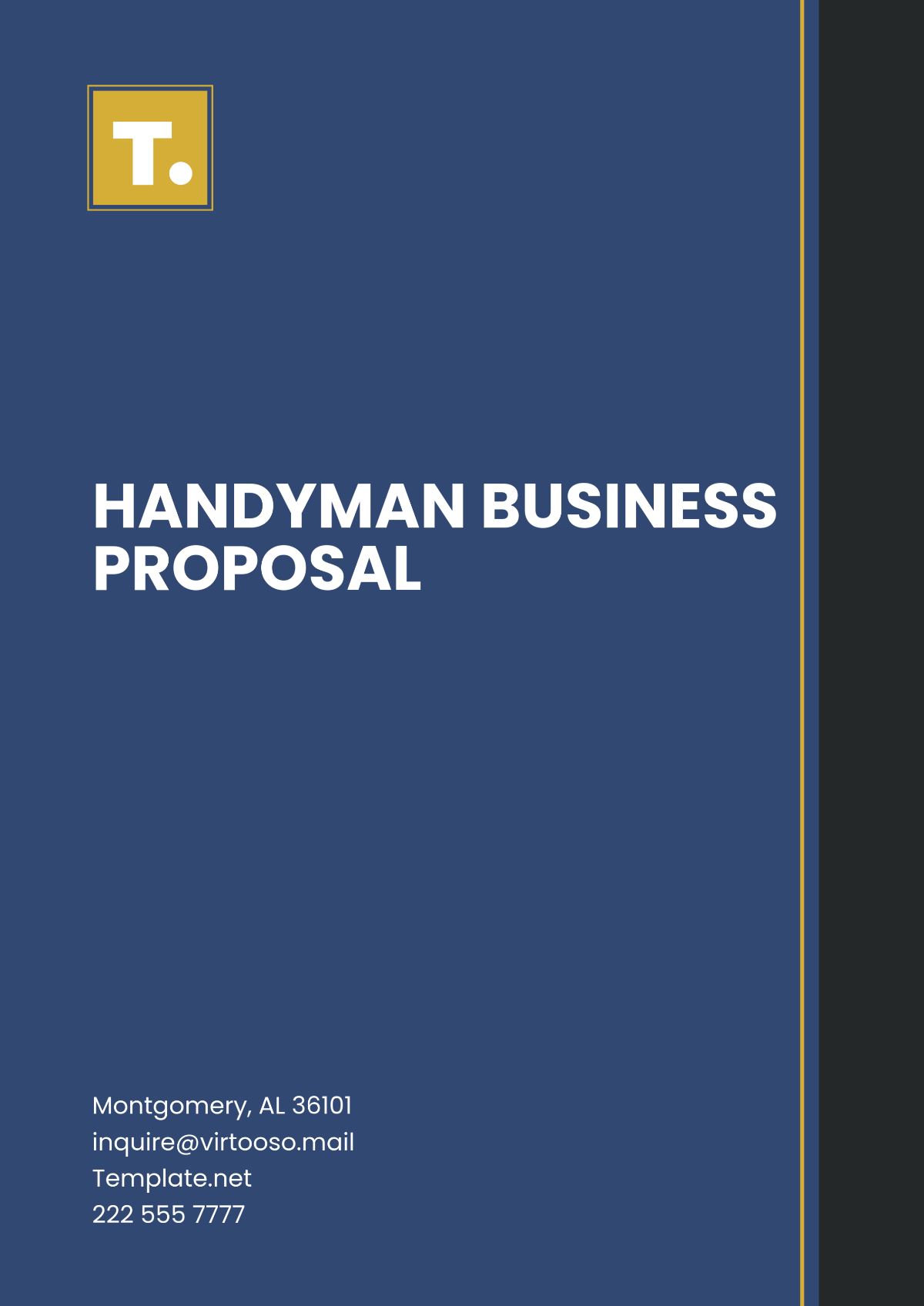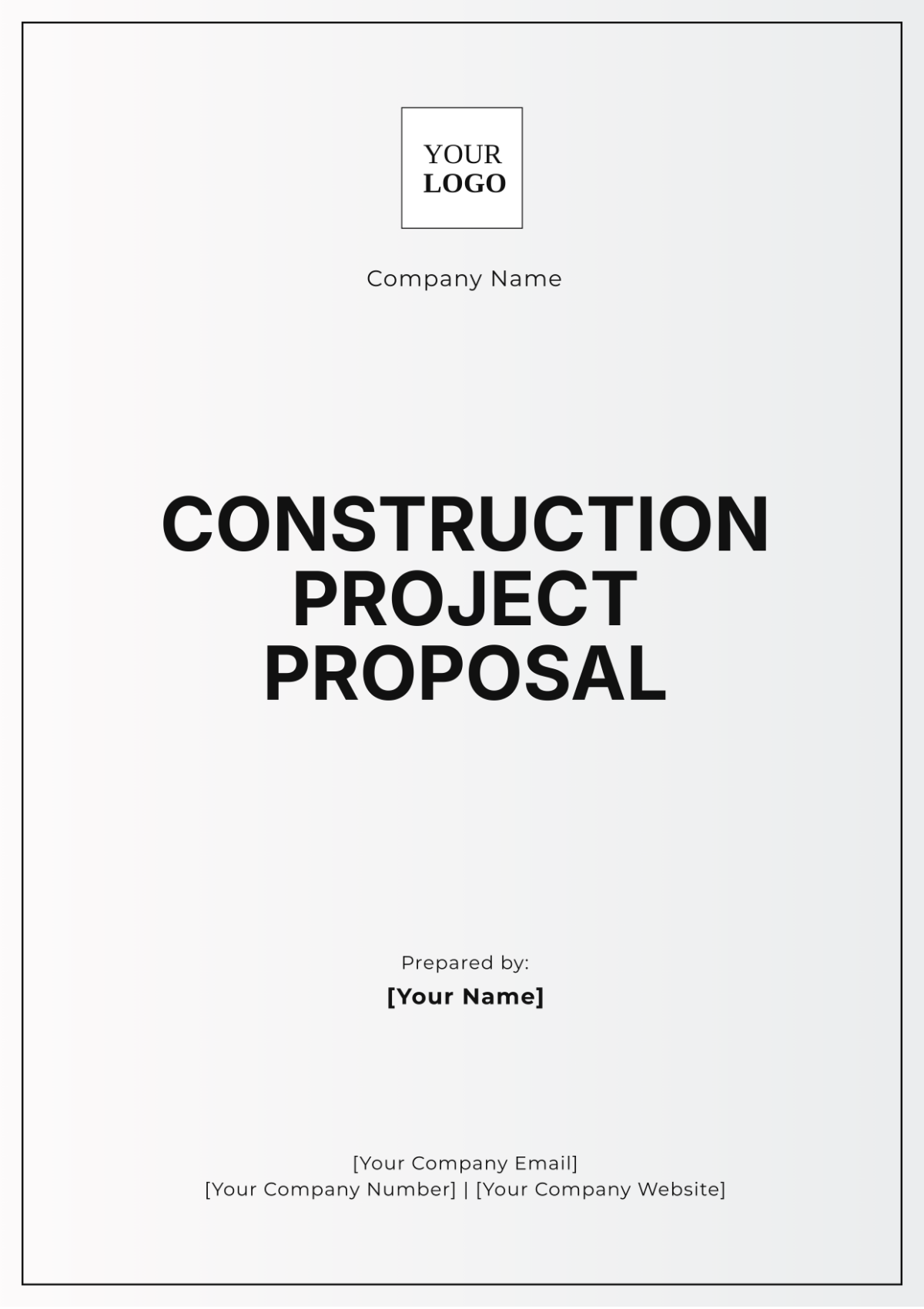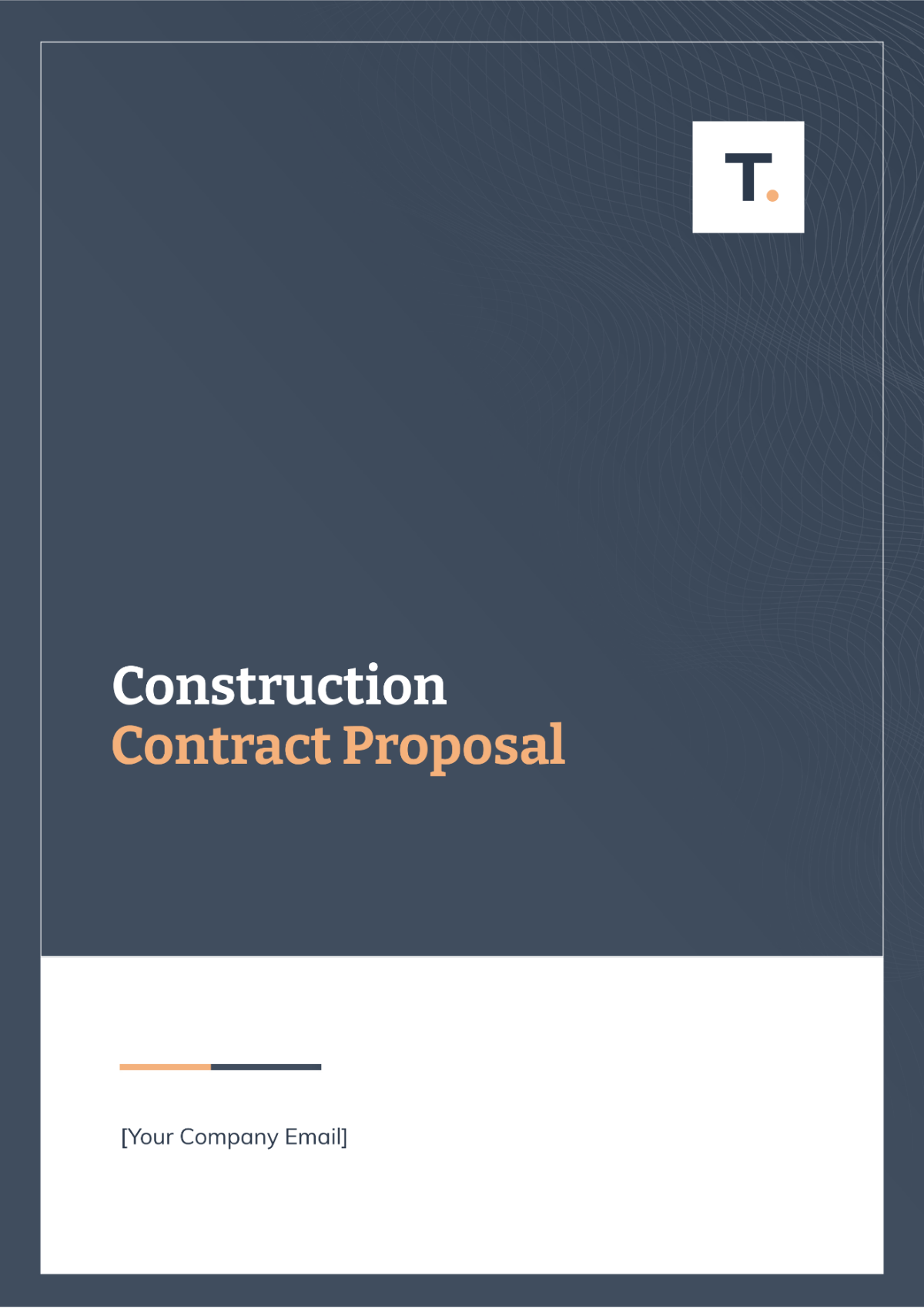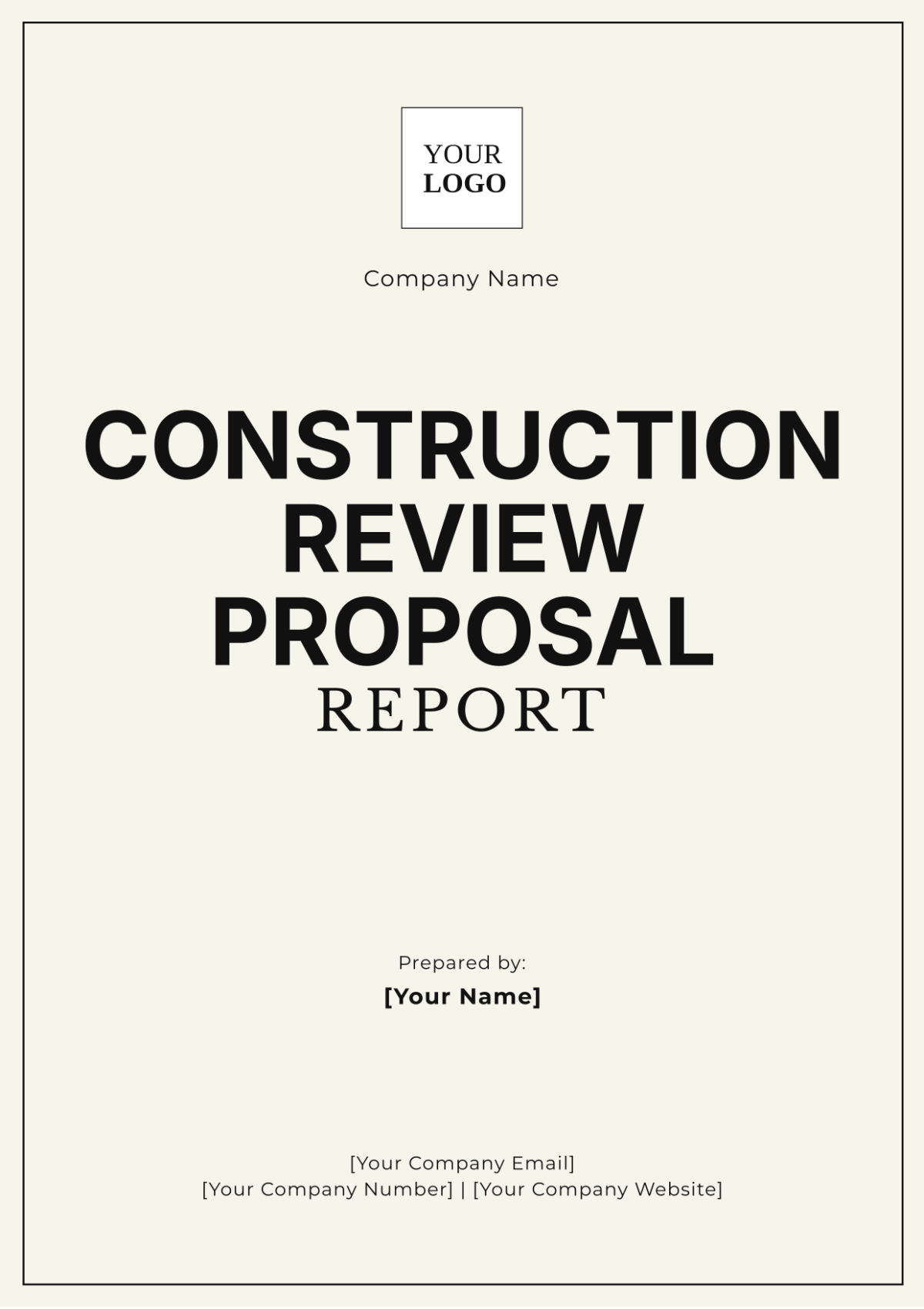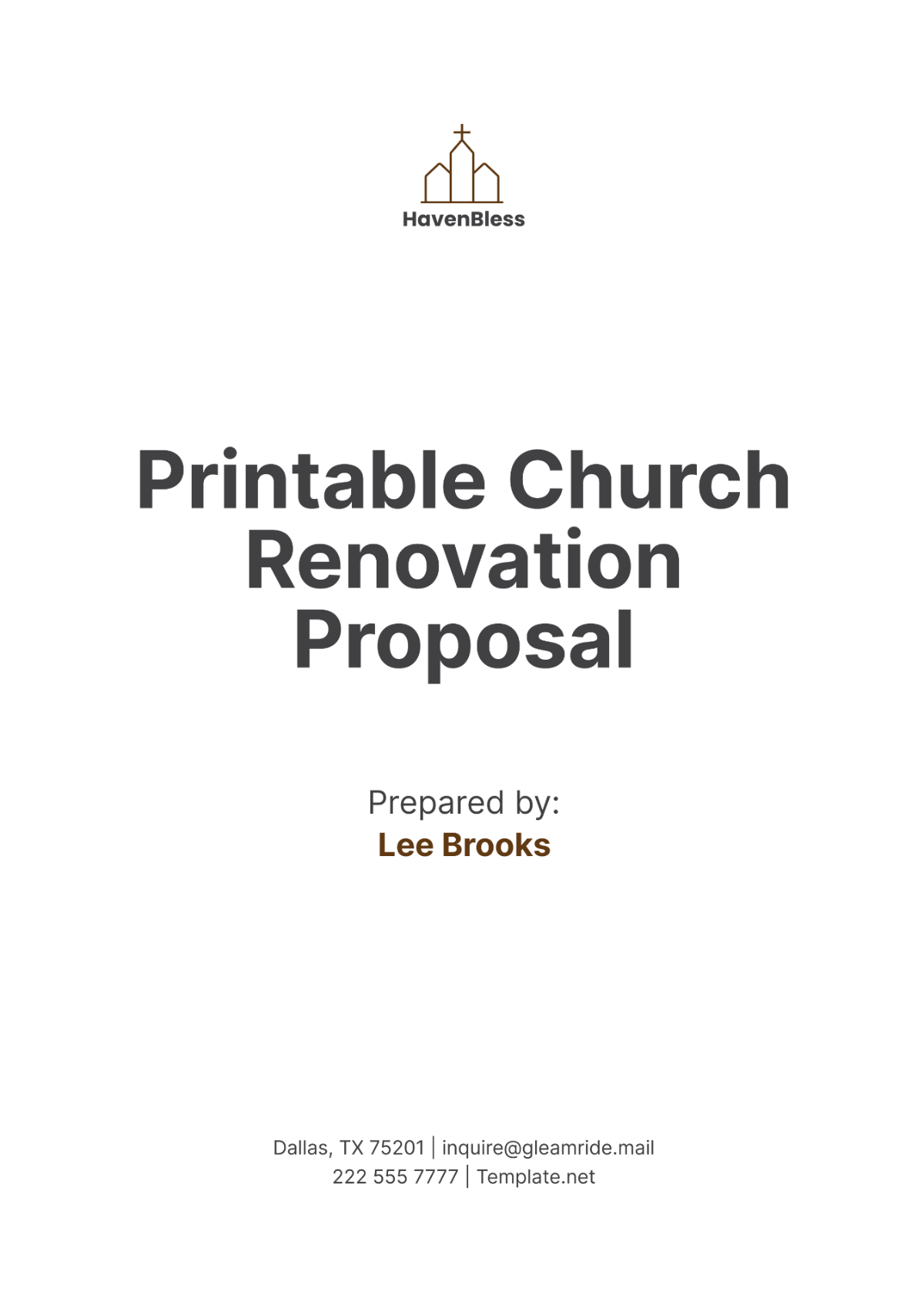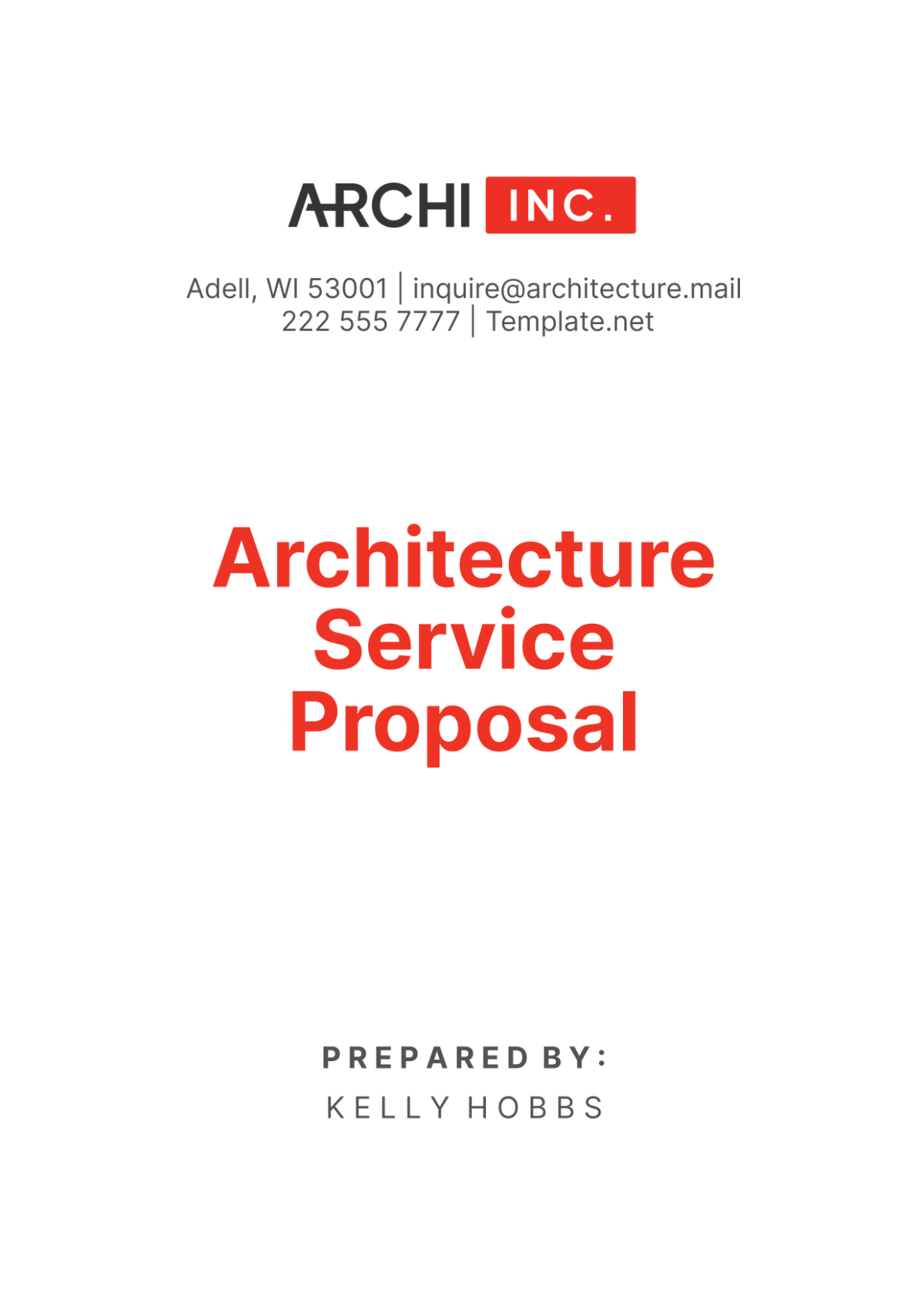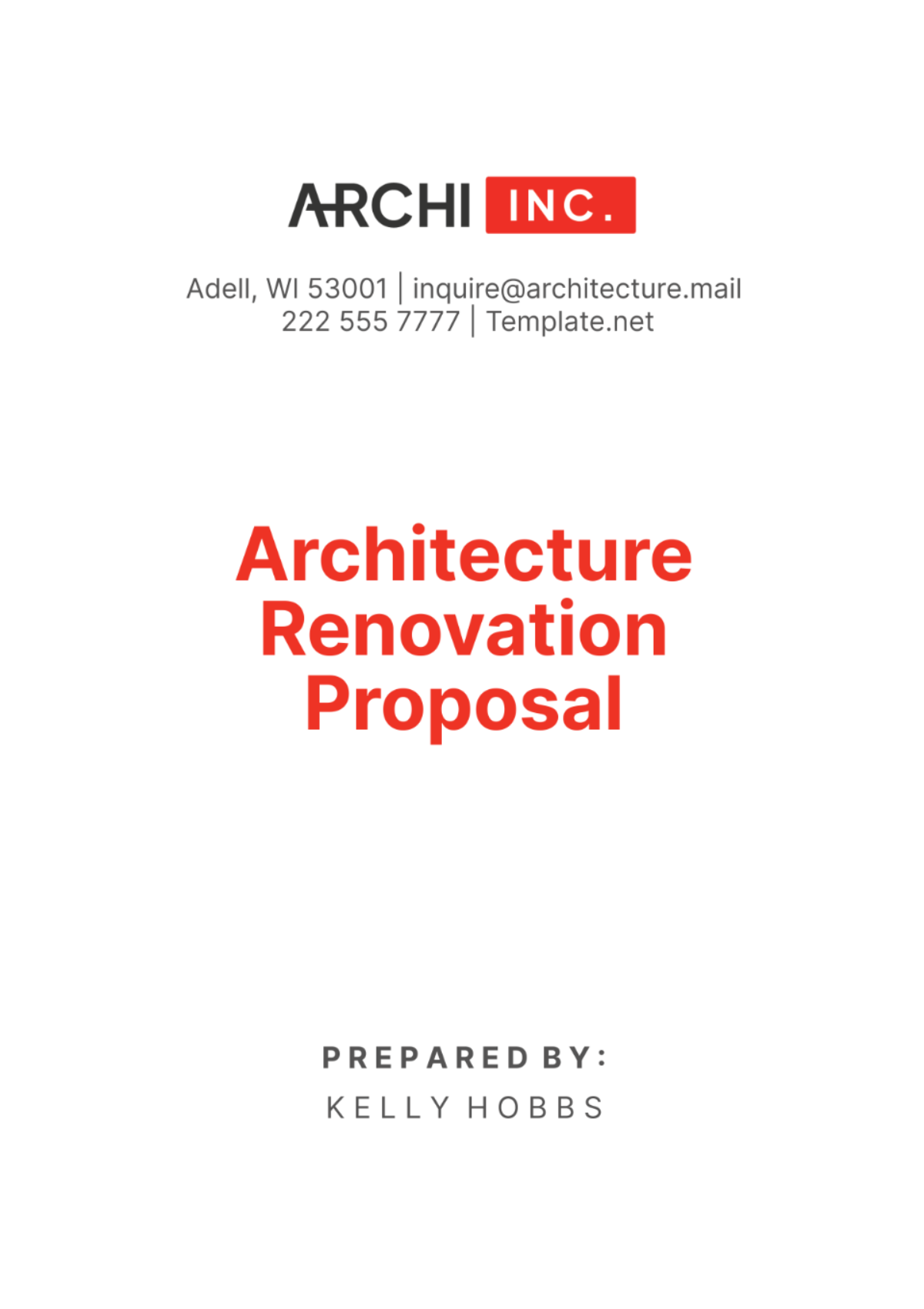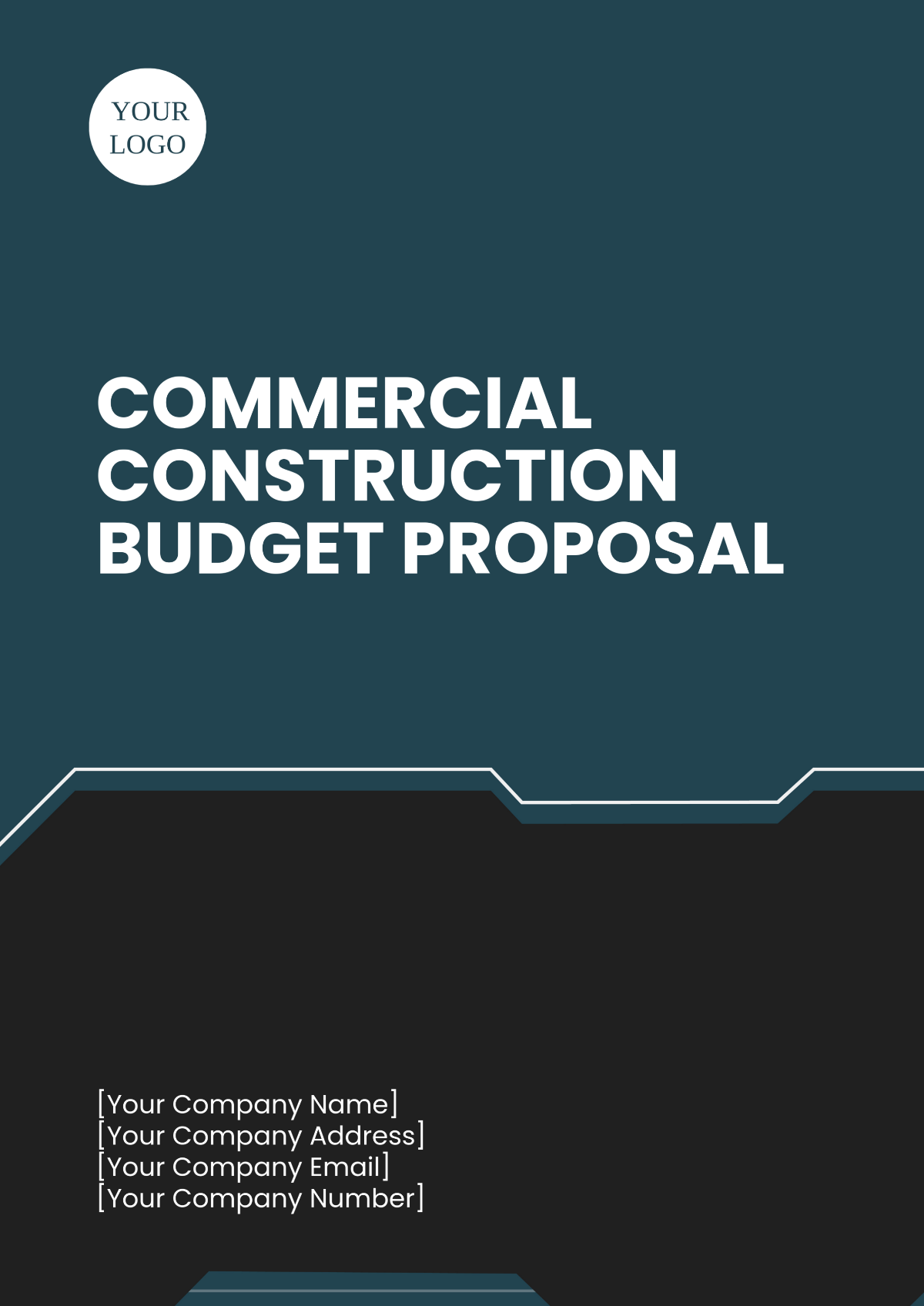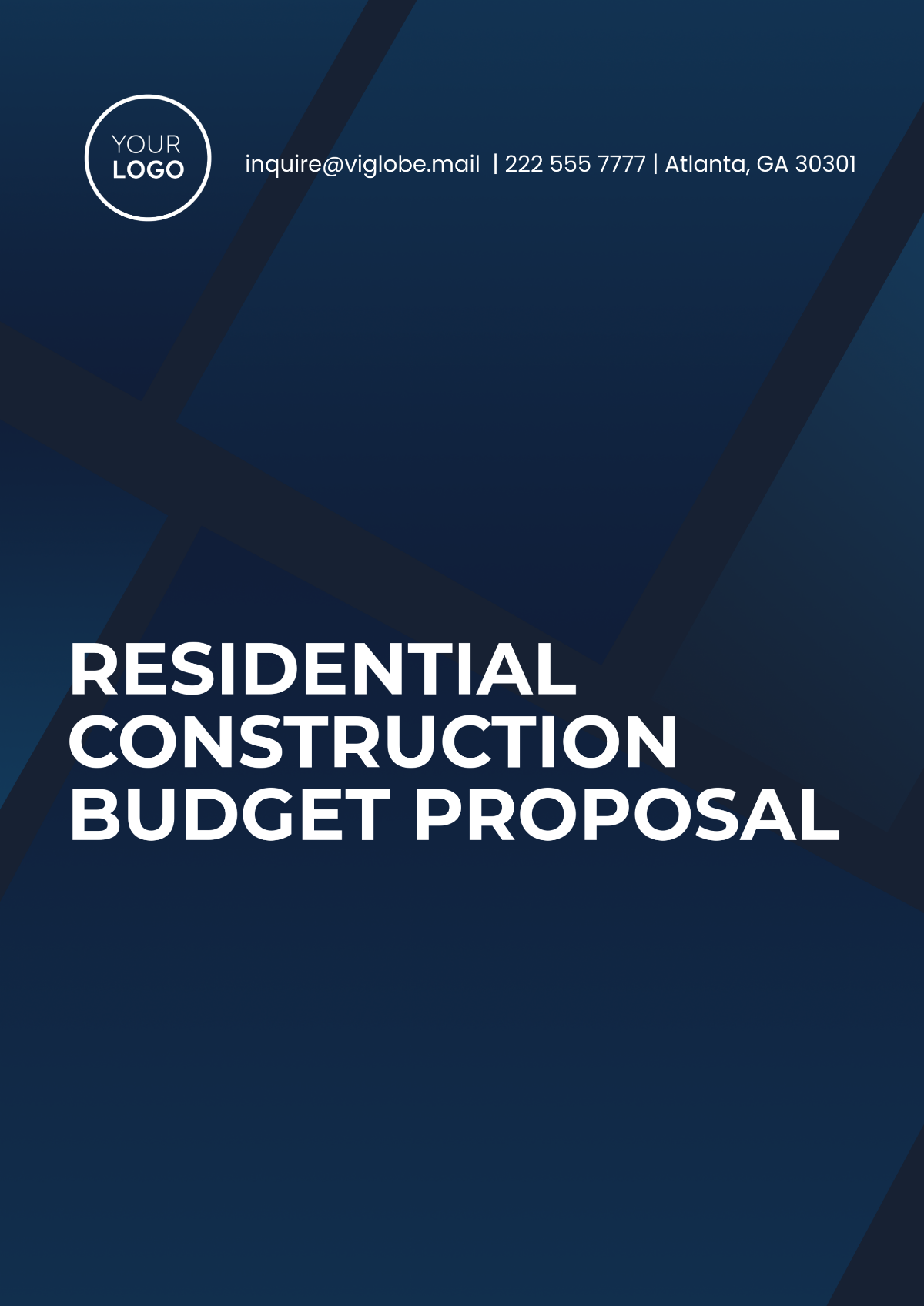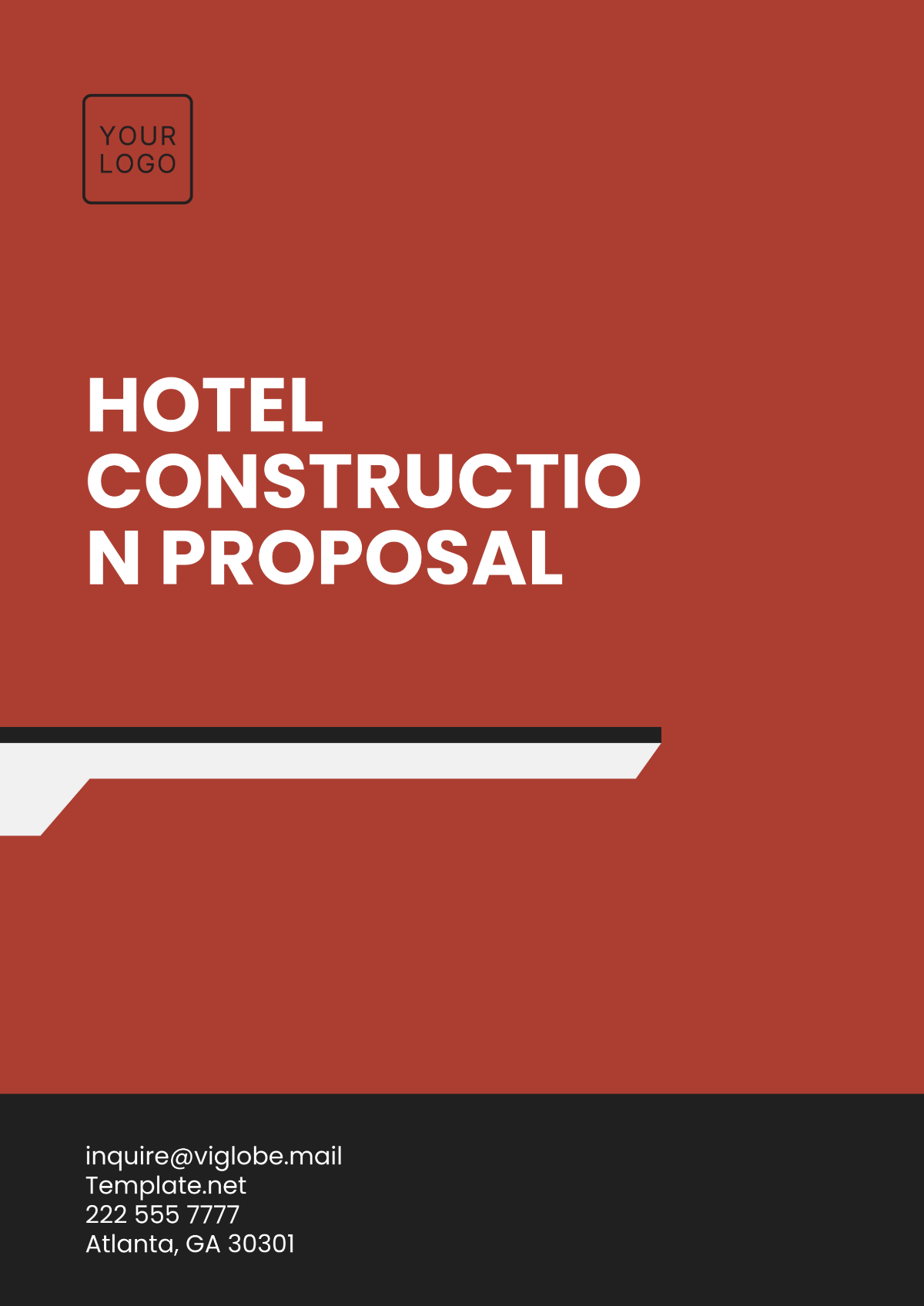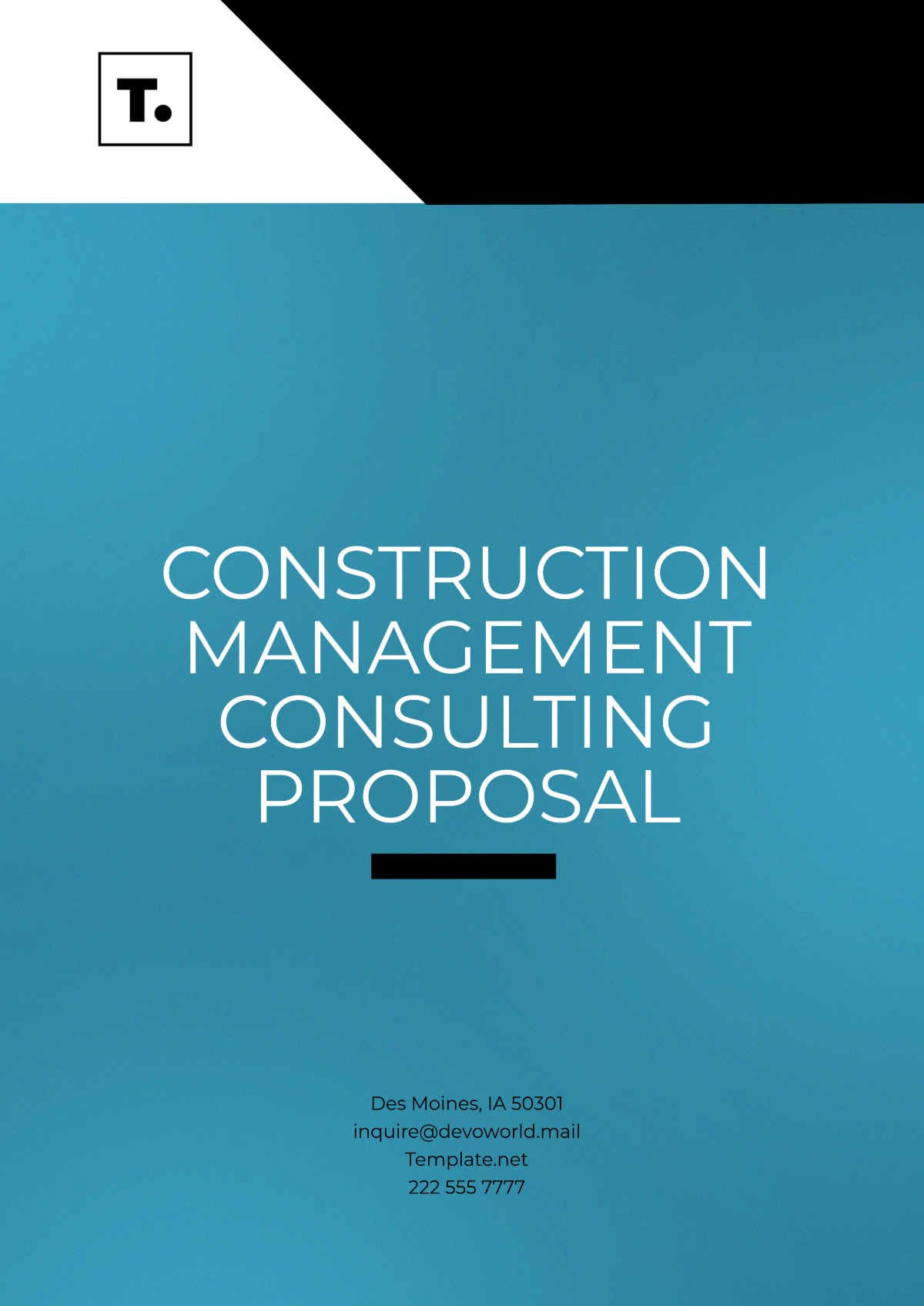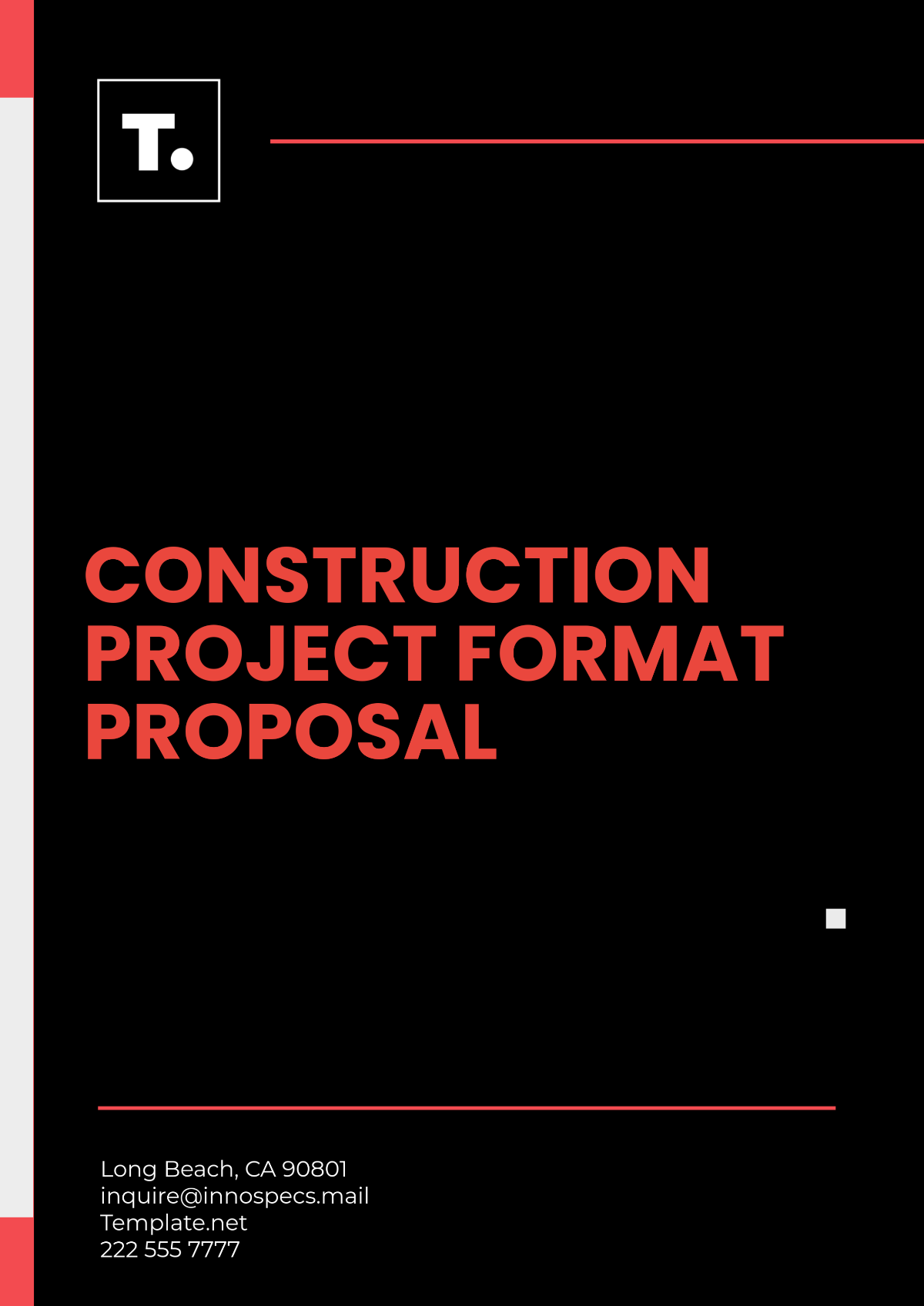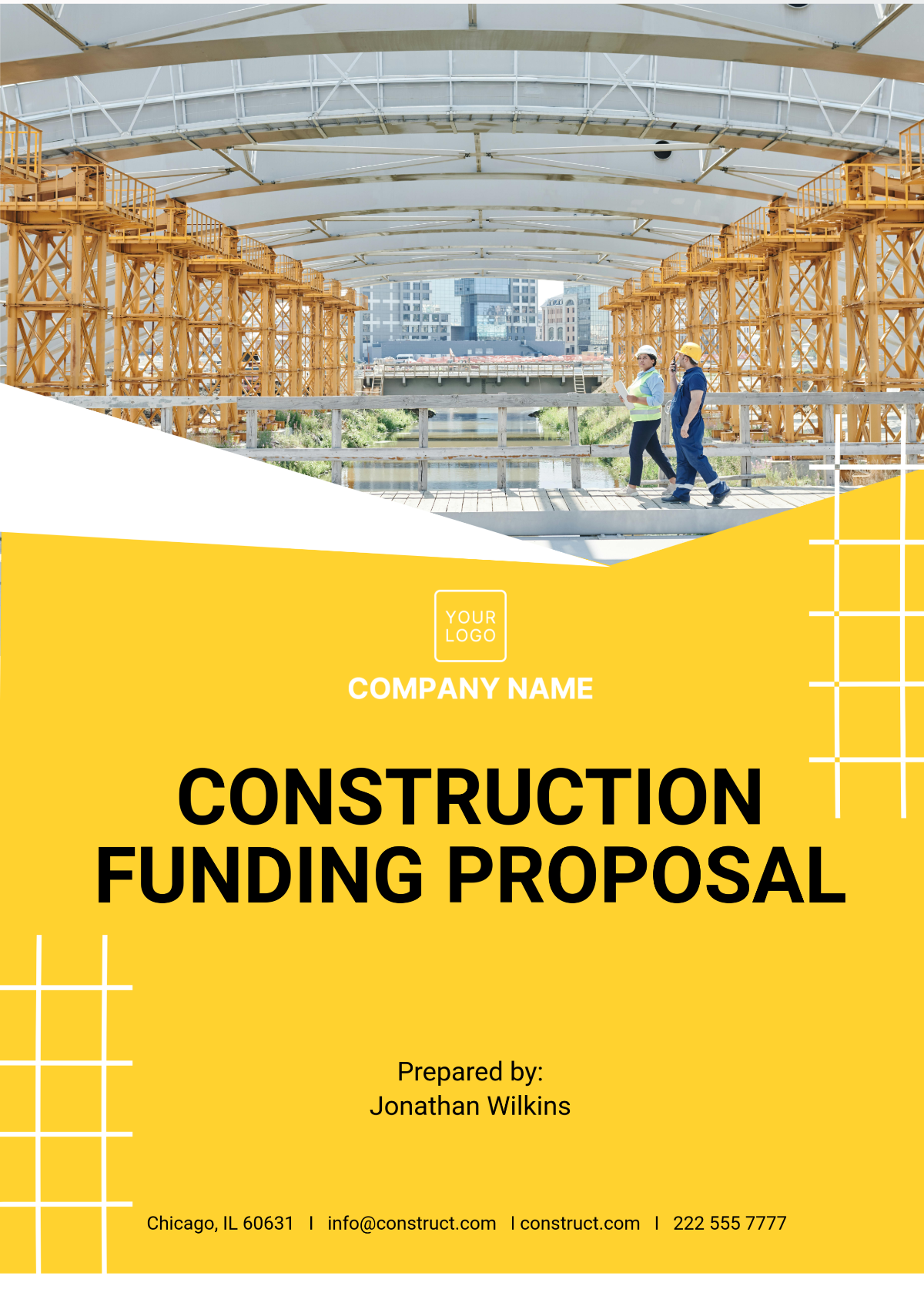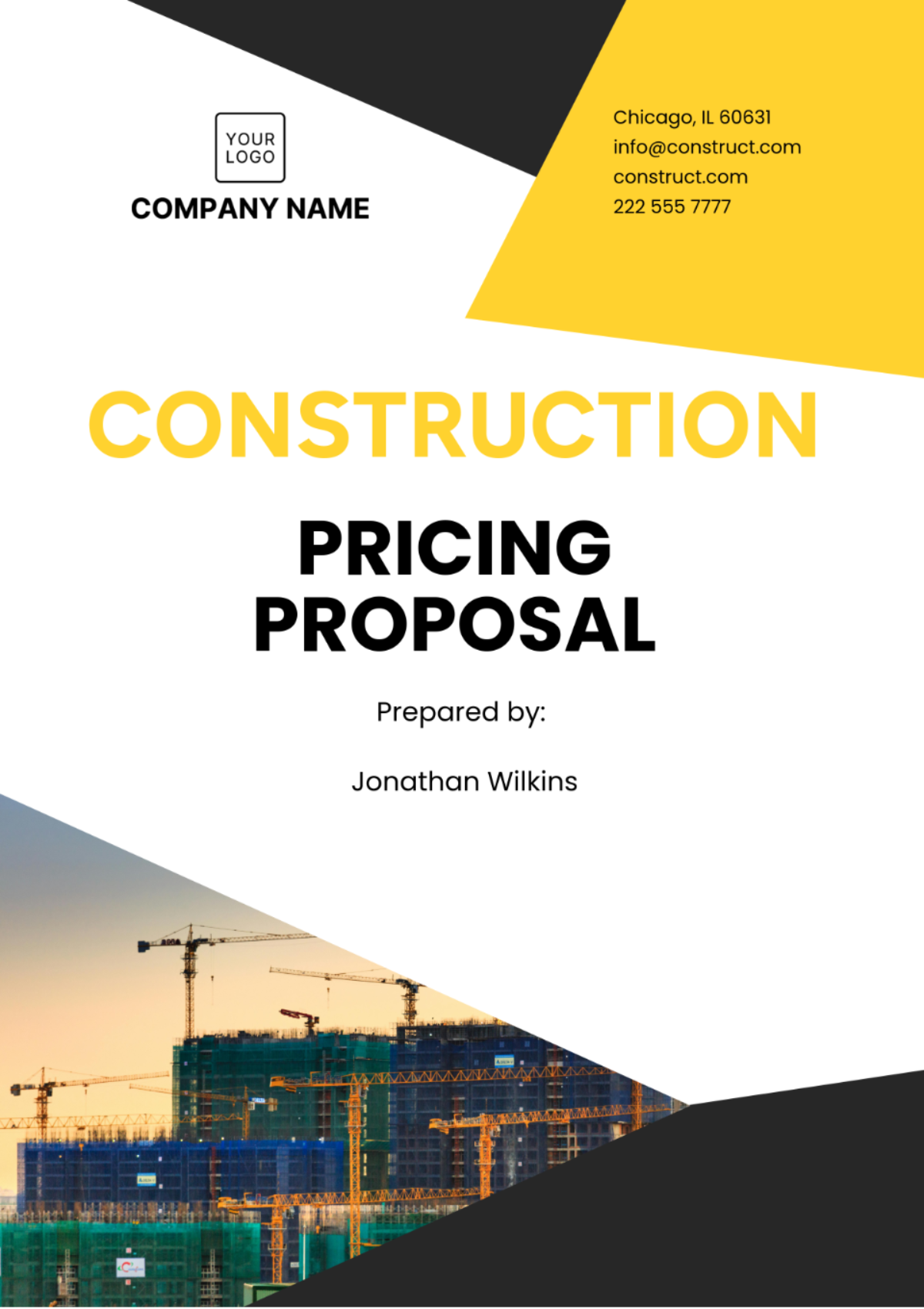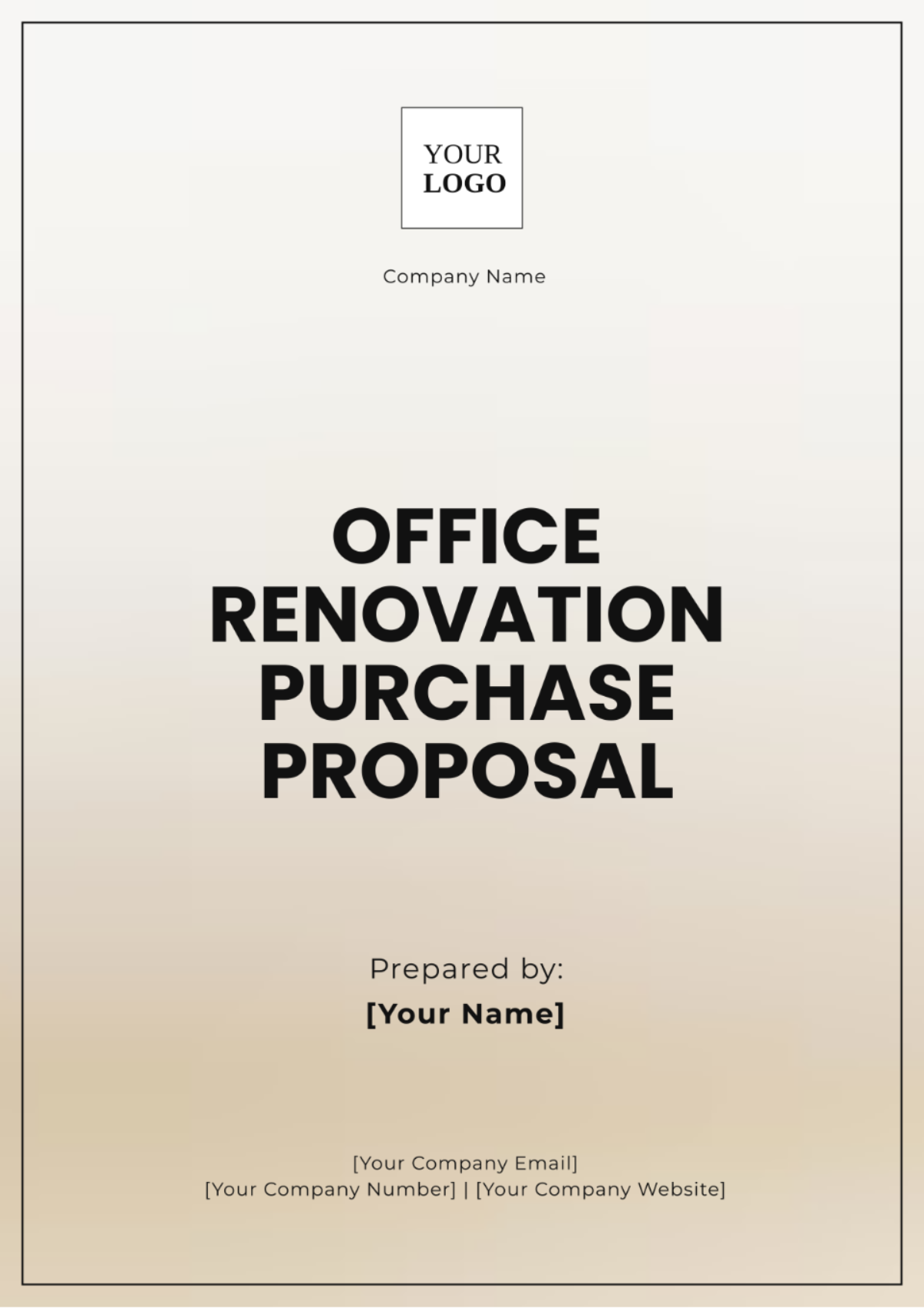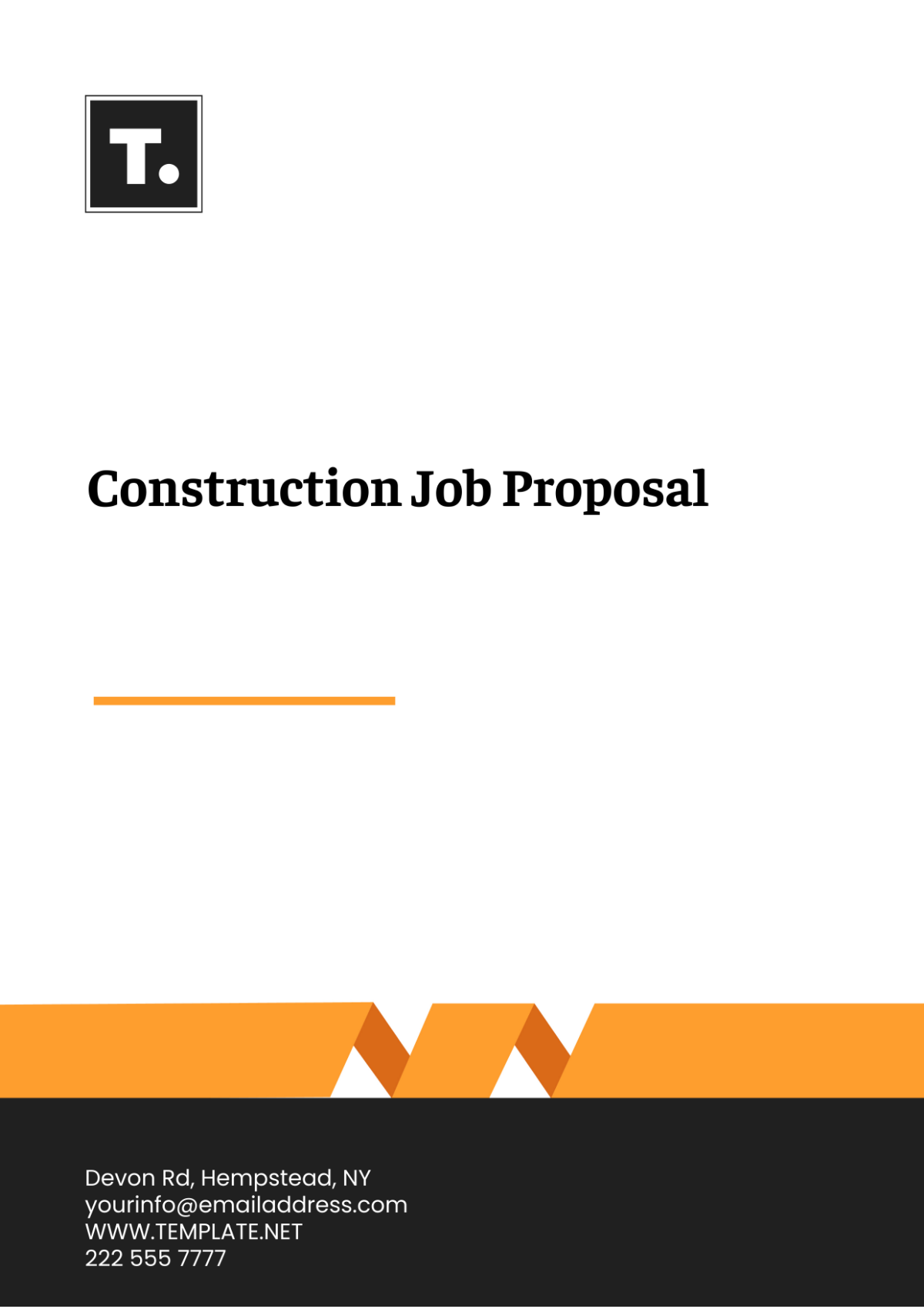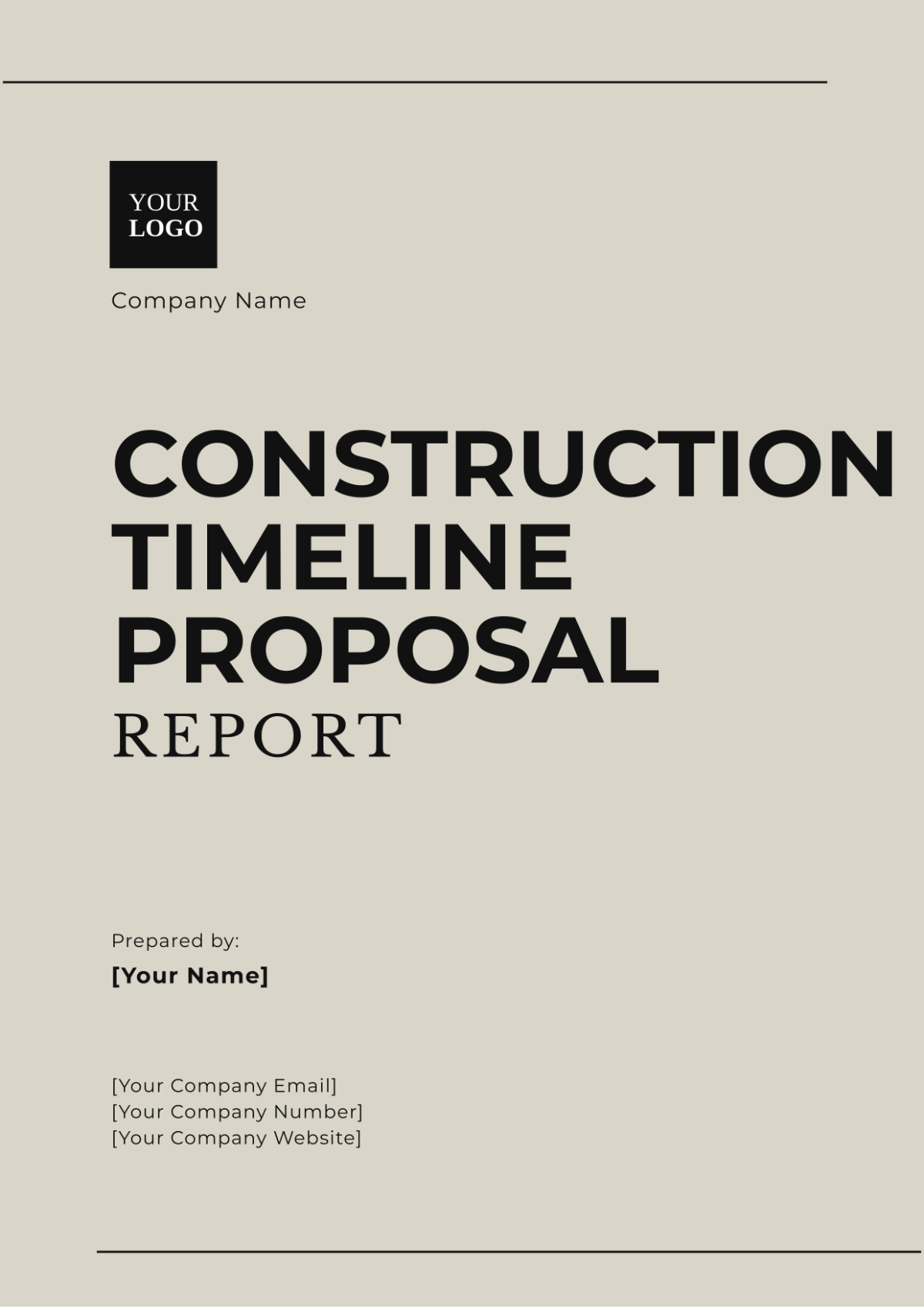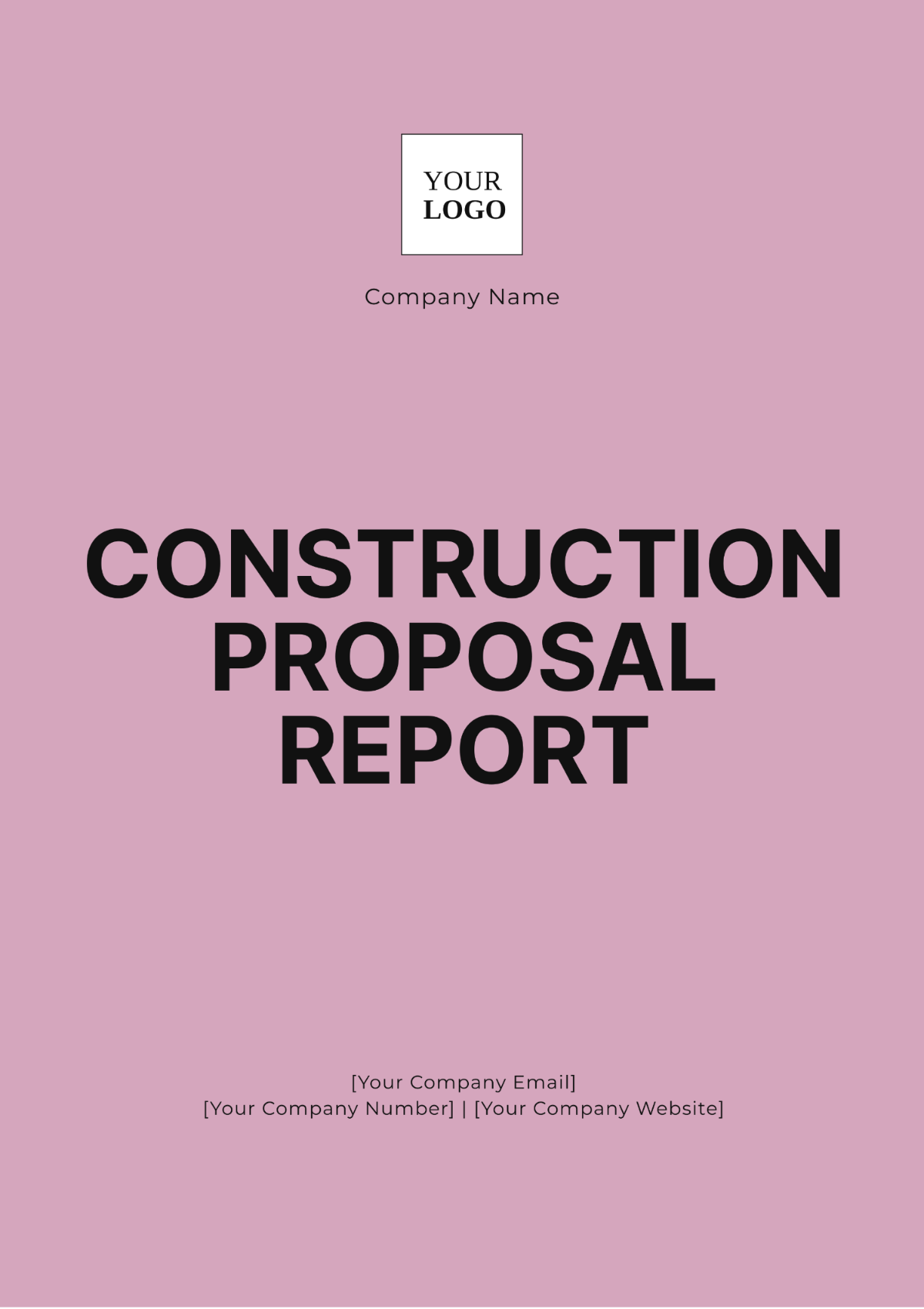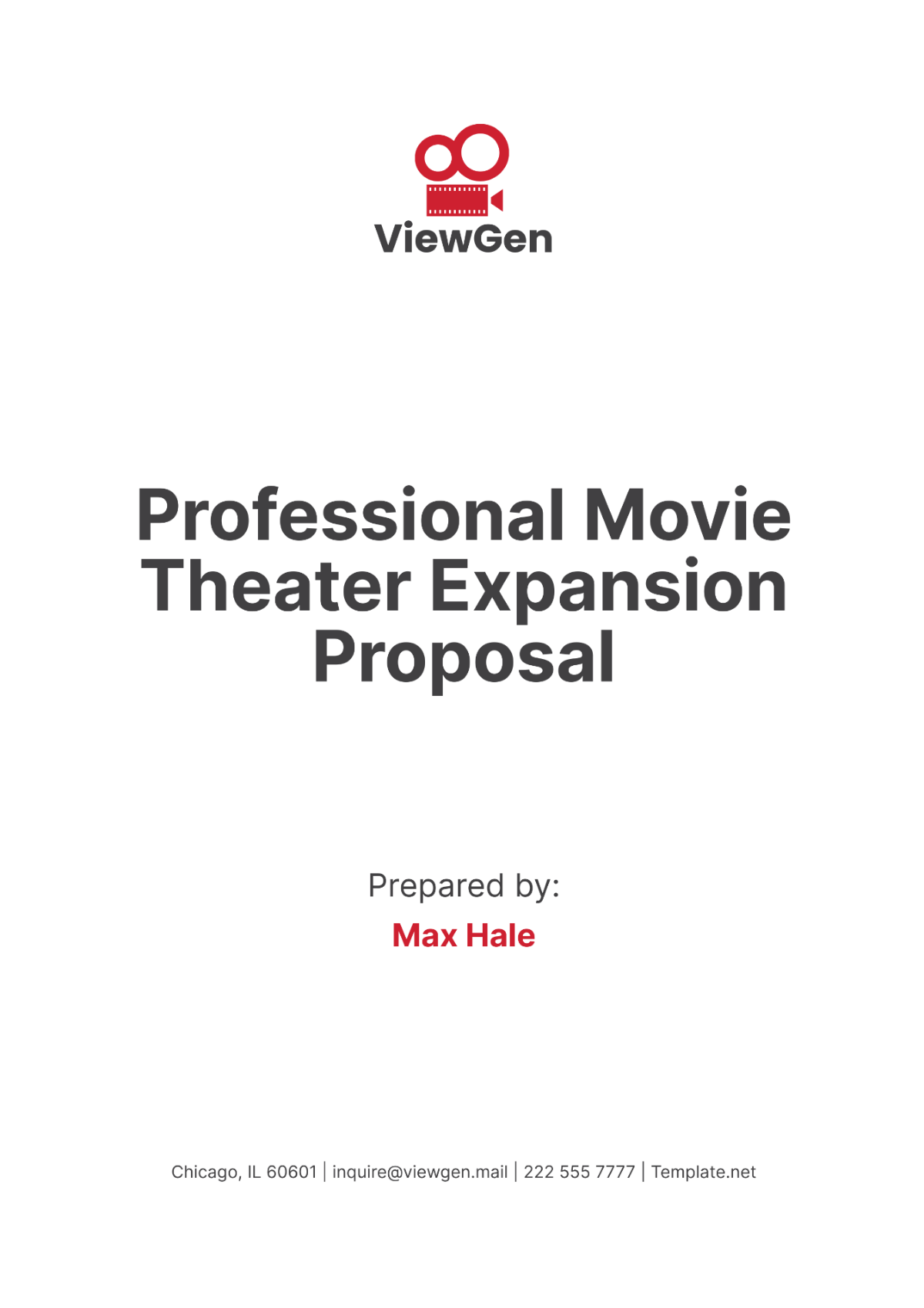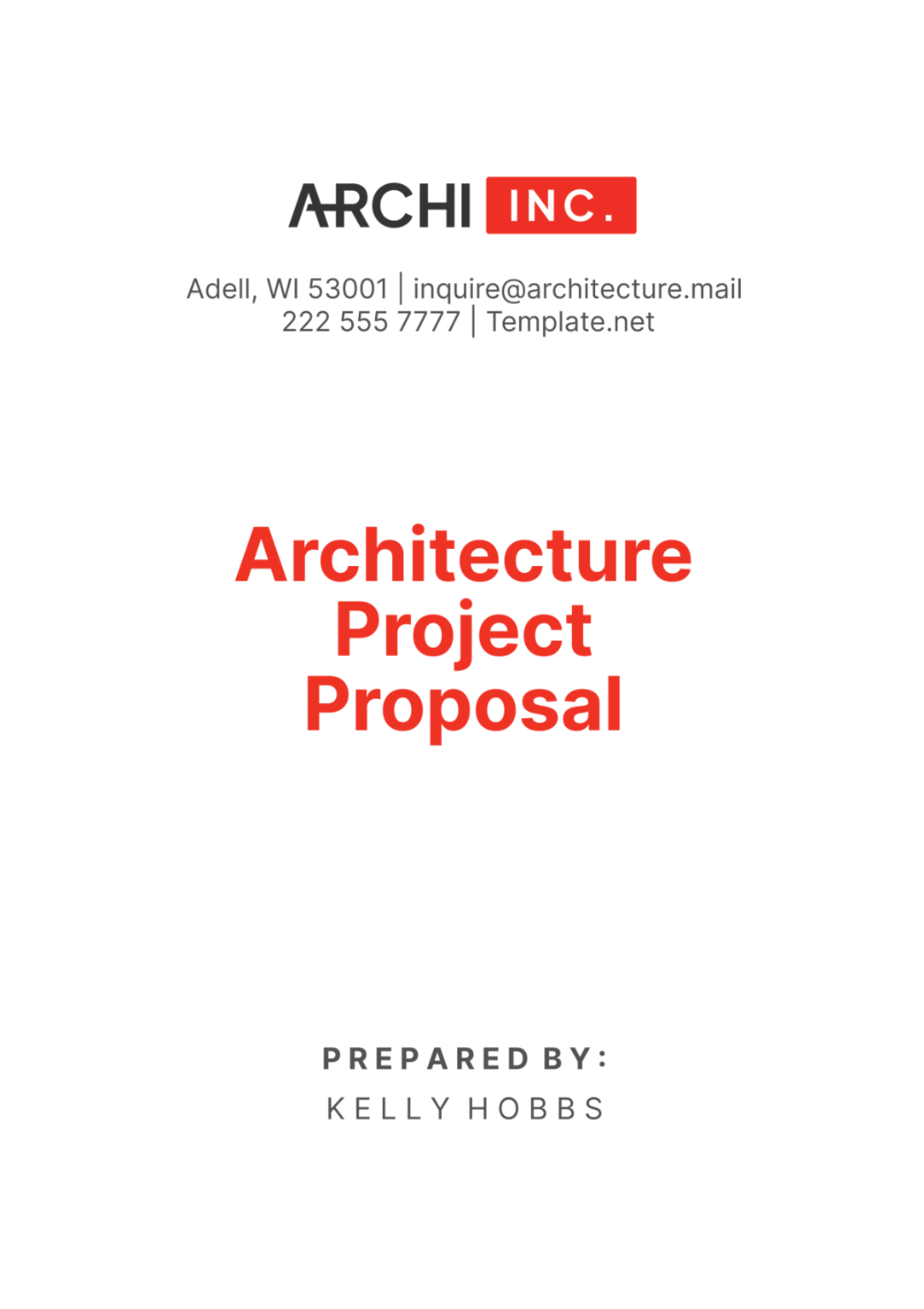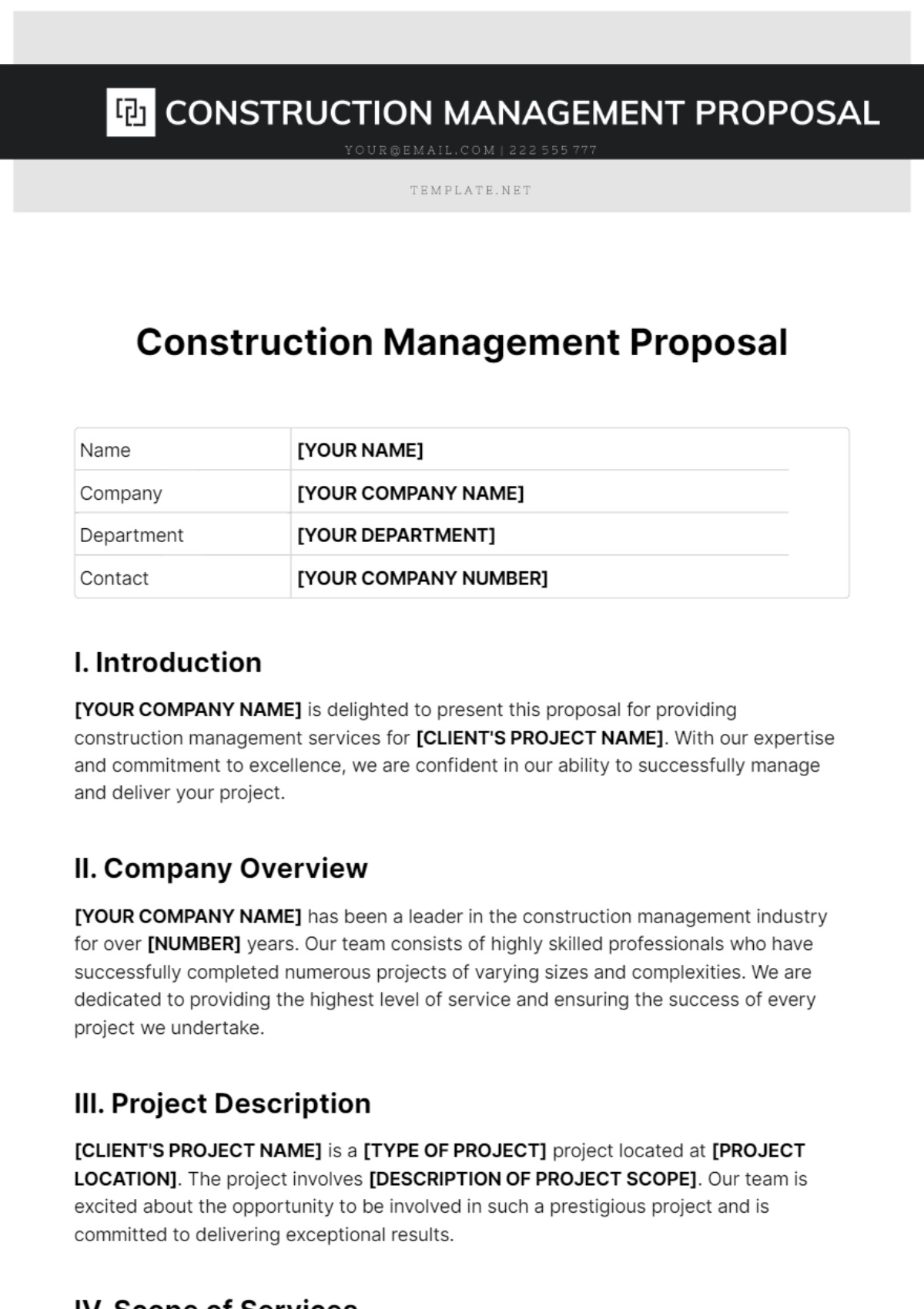Construction Project Proposal
I. Introduction
Welcome to our comprehensive Construction Project Proposal Template. This document provides a detailed framework for outlining the essential components of your construction project. It is designed to be used as a guideline to ensure all critical aspects are covered.
A. Objective
The primary objective of this template is to facilitate the creation of a structured and thorough proposal, which will assist in project planning, execution, and management. It aims to streamline communication between stakeholders, contractors, and team members.
B. Scope
This template encompasses all phases of a construction project, from initial planning to completion. It includes sections for project description, budget estimation, timeline, risk assessment, and more.
II. Project Description
The project description section should offer a concise yet comprehensive overview of the construction project. Detailed information should be provided on the specific requirements, design elements, and any unique features.
A. Project Details
Provide a summary of the project, including the project name, location, and key objectives. Describe the type of construction (residential, commercial, mixed-use) and the expected outcome upon completion.
B. Design and Specifications
This section will cover the architectural and engineering aspects of the project. Include any relevant blueprints, renderings, and technical specifications. Mention any innovative design elements or sustainability features.
III. Budget Estimation
Accurate budget estimation is crucial for the success of any construction project. This section should outline detailed cost projections and financial plans.
A. Cost Breakdown
Category | Estimated Cost |
|---|---|
Materials | $150,000 |
Labor | $200,000 |
Equipment | $50,000 |
Permits and Fees | $10,000 |
B. Financial Plan
Detail the funding sources for the project. This may include investor contributions, loans, or grants. Provide an overview of the financial strategy, including contingency plans for unforeseen expenses.
IV. Timeline
The timeline section should clearly outline the project schedule, from start to finish. It must be detailed enough to guide all stakeholders through each phase of the construction process.
A. Milestones
Project Initiation: January 1, 2050
Design Completion: March 30, 2050
Construction Start: May 15, 2050
Project Completion: December 20, 2050
B. Gantt Chart
A Gantt Chart should be included to visually represent the timeline and track the progress of each phase of the project.
V. Risk Assessment
This section addresses potential risks and mitigation strategies. Identifying risks early can help in developing effective solutions to prevent or minimize their impact on the project.
A. Risk Identification
Weather Delays
Supply Chain Disruptions
Labor Shortages
Regulatory Hurdles
B. Mitigation Strategies
For each risk identified, outline the mitigation strategies that will be employed. For example, to address weather delays, include weather contingency plans in the project schedule. For labor shortages, establish relationships with multiple subcontractors.
VI. Conclusion
The conclusion should summarize the key elements of the proposal and reiterate the project’s objectives and benefits. It should also include a call to action, inviting stakeholders to review and approve the proposal.
Thank you for using our Construction Project Proposal Template. We believe this document will serve as a valuable tool in planning and executing your construction project.
